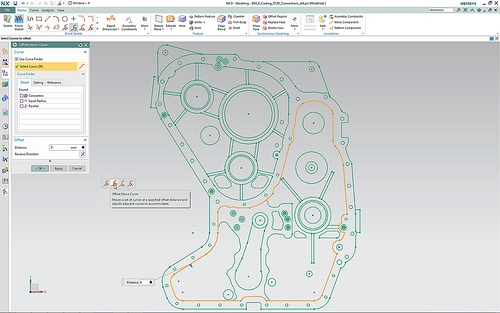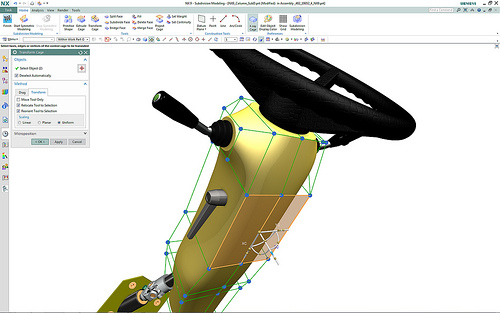Latest News
October 29, 2013
Touting what it claims to be the most significant upgrade to its CAD platform since introducing Synchronous Technology several years back, Siemens PLM Software took the wraps off NX 9, which innovates in the area of 2D modeling and has features that promote the company’s turn toward an industry-specific focus.
Unlike the last few previous versions of the software, the NX development team took a step back with the 9 release to re-examine several key design workflows that have historically been a struggle for its user base, according to Paul Brown, the company’s senior marketing director of NX product engineering. One such workflow is 2D modeling, an area that has been historically neglected by the CAD companies as they shifted attention to 3D capabilities, Brown says.
One of the biggest issues related to 2D modeling is the process around making modifications, Paul explains, which still requires a lot of manual work on the part of the user. Incompatible data structures and inconsistent CAD technology makes working with 2D files a tedious and time-consuming challenge, he adds.
“Every CAD system has added a level of auto constraints to their 2D capabilities, but you still find that users need to add a lot more information about what they want to get the changes they need,” he says.
By bringing Synchronous Technology to bear on the problem, NX 9 now provides a higher level of intelligence to the relationships in a 2D model, minimizing the work involved in 2D model editing. Because ST’s intelligence eliminates the need for data translation, users can edit multi-CAD 2D files up to five times faster—a benefit particularly useful for industries like high tech electronics, industrial machinery, and automotive, especially the powertrain division, which is still highly dependent on large amounts of legacy 2D product data, Brown says.
Another major new feature in NX 9 is Realize Shape, an environment for freeform design aimed at those industries like consumer goods and automotive that product products with highly stylized shapes or complex surfaces. While providing an easy-to-use environment for creating advanced freeform shapes, including in-context analysis and visualization capabilities along with real-time ray-traced rendering, the real standout of Realize Shape is its seamless integration with the CAD/CAM/CAE environment as opposed to similar design tools, which operate as standalone packages.
“We’re not claiming to be first to market in this area, but what sets us apart is making these capabilities an integral part of NX,” Brown says. “We didn’t want a separate add-on that bolts on to the CAD tool and translates data in and out.” As a result of the seamless integration, companies in the medical device, marine, consumer products, and other industries can shorten product development cycles by eliminating the multiple steps associated with using separate tools for freeform design and engineering development, Brown says.
NX 9 is also the first release to incorporate Fourth Generation Design (4GD), a new design and data management paradigm architected to bring efficiencies to complex, large-scale design efforts involving millions of components. 4DG, which is primarily targeted at the shipbuilding industry and is part of Siemens’ recently released Shipbuilding Catalyst offering, enables global, multi-disciplinary engineering teams to filter out aspects of large-scale designs so they can focus on the critical information and models they need for their particular design workflow.
In more of a horizontal focus, NX 9 advances Siemens’ High-Definition PLM experience by embedding Active Workspace 2.0, Teamcenter’s interface, into the CAD tool. Users can leverage the simple, graphic Active Workspace to quickly locate relevant information, be it parts or requirements, and the interface delivers access to the proper information in context, dramatically reducing the time engineers spend searching for data across multiple, disparate systems.
Beyond these core enhancements, NX 9 also delivers hundreds of enhancements that touch CAD, CAM, and CAE.
To get more background on how Synchronous Technology 2D works, watch the video below.
Subscribe to our FREE magazine, FREE email newsletters or both!
Latest News
About the Author
Beth Stackpole is a contributing editor to Digital Engineering. Send e-mail about this article to [email protected].
Follow DE







